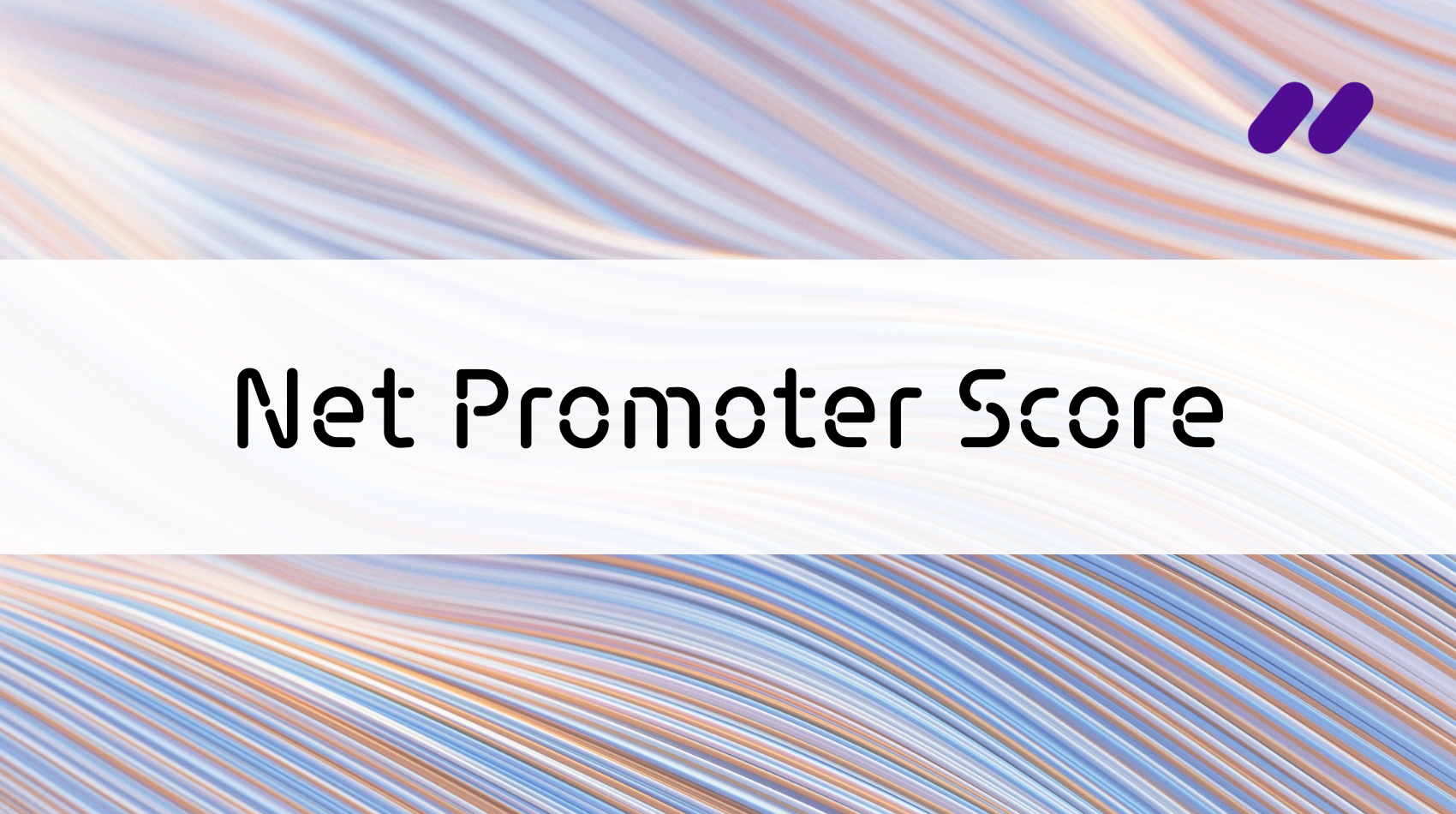Your Net Promoter Score (NPS) is a crucial KPI that measures overall customer satisfaction. Companies once averaged responses from simple customer surveys and left it at that, but now NPS has taken center stage as the best way to measure how your customers truly feel.
Businesses that invest in creating great customer experiences grow revenue 1.4x faster and improve customer lifetime value 1.6x more than companies that don’t.
How can you improve the experiences of your customers? It requires understanding what’s working well and what isn’t. And that’s where NPS scores come into play.
NPS analysis brings together quantitative and qualitative data and considers every survey response rather than just the easy-to-use numeric answers.
NPS analysis today is primarily driven by advancements in AI and natural language processing. As a result, it’s now possible for organizations to analyze thousands of answers to open-ended questions and gain meaningful insights from them, rather than relying on surveys with numeric responses.
So how can you conduct an NPS analysis and discover how your customers feel? It begins by understanding the building blocks of NPS, then diving deeper into how to make NPS improve your overall customer experience.
1. What are promoters, passives, and detractors?
It all begins by asking your customers questions. Let’s take a question like:
“How likely are you to recommend our app to your friends on a scale of 1 to 10?”
You then categorize your customers into three distinct groups based on their responses:
- Promoter: Answered 9 or 10; these are your enthusiastic, loyal customers.
- Passives: Answered 7 to 8; they’re relatively neutral and might become promoters or detractors based on future experiences.
- Detractors: Answered 0 to 6; they’re unhappy and might post bad reviews or speak poorly about your business.
We’re using a simple numeric question as an example, but the same principle applies to open-ended questions. Free-form answers are analyzed to determine intent and emotion, then put customers into the same categories.
2. How do you calculate NPS?
Next, you take all of your categorized customers and calculate your NPS. The NPS equation is:
NPS = % of Promoters – % of Detractors
Passives are always left out of the equation, instead representing room for improvement.
Suppose 30% of your customers are detractors, 20% are passives, and 50% are promoters. So your NPS would be 20 (50-30).
Is that a good NPS score? A recent study found that the average NPS score across all industries is 32, with the top 25% of companies scoring over 72. So if you’re at 20, you have some work to do.
3. How does NPS analysis bring together quantitative and qualitative data?
Your NPS score relies on structured data to categorize customers. You can think of structured data as any data point with predefined formatting possibilities. For instance, NPS scores are structured data as each data point is a number from 0-10, and there can be no variation in this format.
But what about unstructured data, which can come in any format? Open-ended survey responses are unstructured data because the vocabulary, length, format (sentences, bullets, etc.) are not predefined.
Enter text analysis. This leading-edge technology uses natural language processing to analyze open-ended responses and derives intent, emotion, and sentiment. Numeric scores are then assigned, turning unstructured data into usable structured data.
You’ve brought together quantitative and qualitative data for deep NPS analysis that considers every survey response rather than just the easy-to-use numeric answers.
Subscribe to the Keatext blog for more insights
4. Where does NPS analysis fit into the customer journey?
NPS relies on asking your customers questions. But where does that fit into the overall customer journey?
There are three key opportunities in the journey to gain customer feedback and build focused NPS scores with a voice of customer program. These opportunities are:
- Transactional NPS: Send a survey once a customer makes a purchase or other transaction. You can then use these responses to derive a transactional NPS score, identify problem areas, or reinforce what your customers already appreciate.
- Relational NPS: This area considers generalized feedback. You might send a survey every 90 days to existing customers and ask how they feel about your platform or products.
- Post-Call NPS: Did someone reach out to your customer support team? Whether through calls, chat, or emails, send a follow-up survey to ask how it went. These surveys identify what your support teams are excelling at and what needs work.
Each of these areas can help your company identify organizational problems. For example, you might find out that your online store is slow on mobile devices or that your app has too many push notifications. Or perhaps your customer support team isn’t as responsive as customers expect. Then, you can make specific improvements to solve these issues to enhance your customer experience.
The opposite is also true — NPS scores can reinforce what you’re doing well. As a result, you can reinvest in what customers love to make those areas even better.
5. How can you streamline NPS analysis?
How can you optimize NPS-related processes? NPS analysis depends on customer contact, often in the form of surveys.
The secret to NPS analysis is leveraging available tools to do the heavy lifting rather than creating more work for your employees. You can save your skilled workers for reviewing the results rather than asking them to read and score survey responses.
Integrating the right apps and platforms with your internal systems can improve process efficiency and cut down or eliminate manual involvement.
For example, SurveyMonkey is an industry-leading platform that integrates with your entire workflow to send surveys at predefined intervals or triggers automatically. You can then use Keatext to run text analysis on open-ended answers to gain insights into how customers feel.
The secret to NPS analysis is leveraging available tools to do the heavy lifting rather than creating more work for your employees. You can save your skilled workers for reviewing the results rather than asking them to read and score survey responses.
6. How do you perform NPS analysis?
NPS analysis involves a few critical practices to create an accurate score that reflects how customers feel, alongside deriving data-driven insights you can use to improve your business.
Sentiment categorization
Open-ended questions are essential, but when they exist as blocks of text, they aren’t doing much for your business. Sentiment categorization analyzes free-form answers to determine their overall sentiment, then categorizes them.
You can categorize sentiment however you like. A typical example would be categorizing sentiment into positive, negative, or neutral.
But don’t limit yourself to those; you can also divide them into usability, functionality, or dependability. Categorize sentiments based on your product, service, or business goals.
Root cause identification
Having the raw number of promoters and detractors is only the beginning. It’s essential to understand the root causes of your NPS, known as NPS drivers, to reinforce what’s going well and fix what’s not.
Let’s say you have an NPS of 28 — you have room for improvement. But on its own, you don’t know why. Root cause identification helps you understand why your score is below the average so you can fix what’s going wrong.
There are several strategies for root cause identification. One of the most popular methods is called “The 5 Whys.” This approach involves five “why” questions, with each question diving deeper, expanding on the previous why.
For example, imagine you have a recurring open-ended response saying, “the app is way too buggy.”
- 1st Why: We recently deployed a new update that may have issues.
- 2nd Why: The update was a response to frequently requested features.
- 3rd Why: We didn’t have this feature in the old version.
- 4th Why: Time constraints made developers rush to include the new feature.
- 5th Why: We didn’t test the implementation well enough.
Now, rather than trying to fix every possible bug to address this response, you know exactly where to start working.
Using a large enough sample size for any root cause identification approach is vital. Data should be collected over a selected period rather than all-time. You should also use over 500 responses, but this can be reduced based on your company size.
Trend detection
Think of your NPS score as a single frame in a movie. It’s a snapshot of how your customers feel right now but doesn’t consider the past or potential future.
Calculate your NPS frequently, including sentiment categorization and root cause identification. Then, over time, you’ll understand how your customers have reacted to app updates, improvements in your customer support, or other organizational changes.
If your NPS score improved over the past six months, that’s a sign that you’ve made meaningful improvements. You’ll understand long-term trends and be able to improve your entire organization continually.
Customer journey segmentation
We discussed customer journeys earlier, but let’s hone in on how you can segment your NPS score based on specific milestones.
Understanding your overall NPS score is essential. Yet, you can miss out on powerful insights without segmenting them based on where customers are in their journey.
For example, sending surveys after the first purchase can help you create an NPS score focusing on how customers feel immediately after becoming a customer. You can then send a follow-up survey a month later to discover how they’re feeling after the fact, and calculate a new NPS score just for the second survey.
Are customers’ opinions improving or worsening between those two surveys? Run root cause identification to discover why, and react accordingly.
Impactful AI-based recommendations
AI-based recommendations take the guesswork out of what you can do to improve your NPS score. Text analysis, sentiment categorization, and trend identification can all be handled by leading-edge AI-powered platforms, but that’s the tip of the iceberg.
The right platform can then provide precise recommendations about how you can improve your NPS score. Rather than relying on manually reviewing piles of data, AI-based recommendations provide actionable suggestions, ready for you to implement into your organization.
For example, you might discover that your shopping cart is too slow at critical points during the checkout process. But you might miss out on this feedback when manually pouring over open-ended answers. Your AI-driven platform won’t, and you’ll know exactly where to look to improve the checkout experience.
Your NPS Score is an Essential KPI
You track sales, revenue, and expenses — it’s time to add your NPS score to the list. Understanding how your customers feel, whether positive or negative, is crucial. You’ll be able to make targeted improvements throughout your organization to keep customers happy and loyal.





